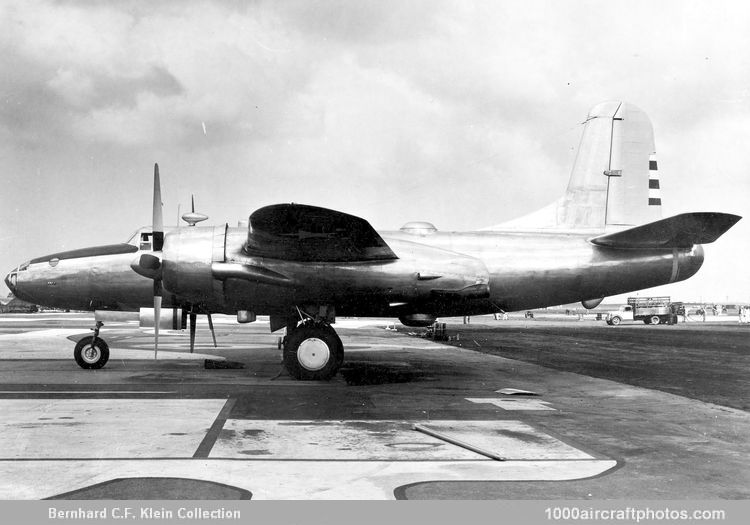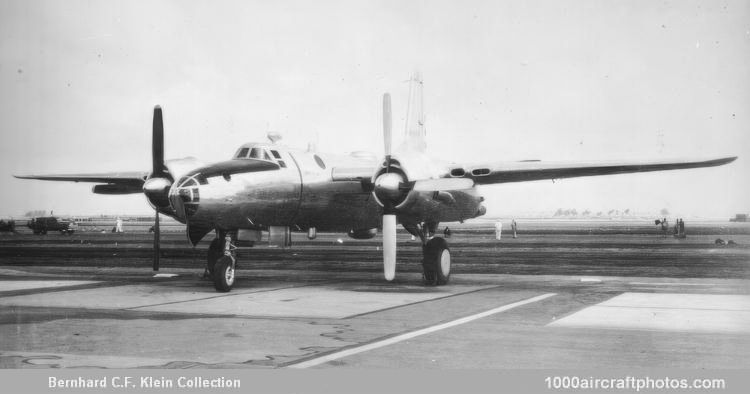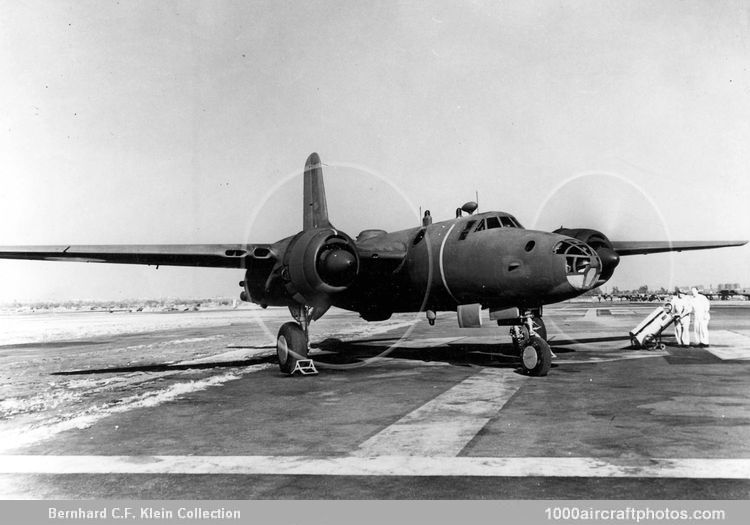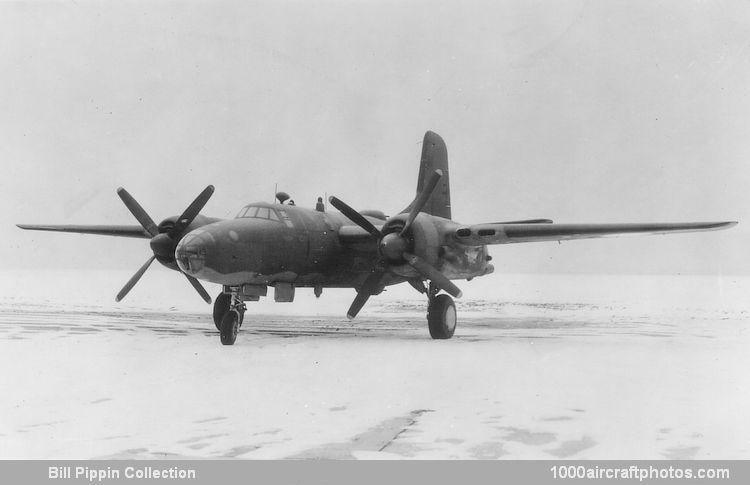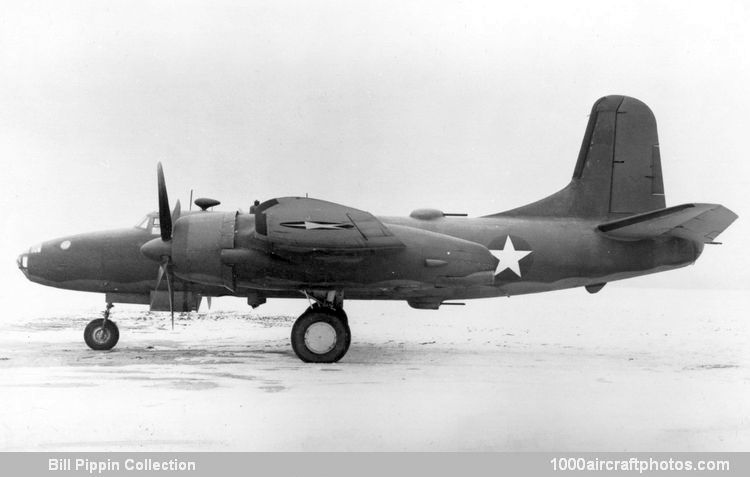BERNHARD C.F. KLEIN MEMORIAL COLLECTION
No. 4867. North American NA-63 XB-28 (40-3056 c/n 63-2233) US Army Air Forces
Top, third & fourth: Photographs from North American, taken at Mines Field, Los Angeles, California, USA, April 1942
09/30/2024. Remarks by
Johan Visschedijk: "Work on a twin-engined high altitude bomber based on the B-25 Mitchell began in 1939 at about the same time that the Mitchell itself was being finalized in the light of flight testing of the NA-40 prototypes. Thus, while the production form of the NA-40 was identified as the NA-62, the high altitude variant was the NA-63. The principal difference, as originally planned, was that the NA-63 had a circular section fuselage containing a pressurized cabin accommodating the crew of five. A contract for three prototypes (serial 40-3056 to 40-3056) was placed on February 13th, 1940.
(
Jeff Huston Collection)
By the time the first of these, designated XB-28 (40-3056 c/n 63-2233), was rolled out in April 1942, many changes had been made, like a single fin and rudder, so that little resemblance to the Mitchell remained. The XB-28 was one of the first bombers to feature remote control dorsal and ventral gun turrets and a tail barbette. Each containing two 0.50 in (12.7 mm) machine guns, these were operated by a gunner from the pressurized crew compartment. Sighting was by means of a 180 degree 'fish-eye' periscope behind the flight deck, as all three gun positions were outside the pressurized area. Three more 0.30 in (7.62 mm) machine guns fired forwards. This arrangement for defensive armament was similar to that which was eventually adopted by the B-29 Superfortress. The bomb-bay could carry up to 4,000 lb (1,814 kg).
The engines were 2,000 hp Pratt & Whitney R-2800-11 Double Wasp eighteen-cylinder two-row air-cooled radial engines driving four-bladed propellers.
Pressurization of the cabin was achieved by means of a mechanical engine-driven supercharger that maintained an equivalent pressure height of 8,000 ft (2,438 m) at altitudes of up to 33,000 ft (10,058 m). Sealing of the cabin was by means of rubber strips sandwiched between all riveted joints, and a plastic compound was sprayed over the entire internal skin. Cabin heaters were incorporated in the ducts that supplied pressurized air to the cabin.
The XB-28 was rolled out in natural metal finish only to don camouflage battledress before it was first flown on April 24, 1942, by Engineering Test Pilot Edward W. Virgin, who was accompanied by one other crewmember.
(
Bill Pippin Collection) APS No. 3714
The aircraft went to Wright Field, Ohio, where it was extensively flight-tested with its planned operational crew of five. The XB-28 performed well and demonstrated an excellent high altitude capability, but a requirement for such a type of twin-engined bomber was not established, and the program to develop three prototypes never reached fruition. After further testing, the first XB-28 was stripped of wings and used as a high altitude pressurization chamber, the projected second XB-28 (40-3057) was never completed. This was already decided before May 14, 1941, as on that day the prototype Grumman XP-50 Skyrocket took off with the serial 40-3057 of the second XB-28.
The third machine (40-3058 c/n 67-3417) was finished as a high altitude photo reconnaissance aircraft with improved R-2800-27 engines. With the new designation NA-67 XB-28A, it made its maiden flight exactly a year after the first, on April 24, 1943, again with Virgin as pilot. However, the XB-28A was not long for this world.
On August 4, 1943, it was aloft for 'fixed rudder, rate of roll' tests with Bob Chilton as pilot and Roy Ferrin as flight test engineer. After 90 minutes of testing, the aircraft developed a violent tail shake and rudder pedal oscillation while in a dive and Chilton, losing control, determined that it was necessary to hit the silk. Ferrin went aft, forced open the lower hatch and leapt out over the Pacific ocean a few miles from Balboa, California. Chilton remained aboard for a minute or two longer and departed at 6,000 ft (1,828 m). Separated by a considerable distance, the men were rescued by civilian boats, one of them manned by a former RAF pilot who had, himself, been rescued from the English Channel during WW I.
But by August 1943, with one airframe reduced to duty as a wingless pressure chamber and the other lying at the bottom of the sea, there was no practical way to continue with the XB-28 program and the project was duly abandoned. A 'limited edition' that never entered service, the rather attractive XB-28 nonetheless contributed substantially to the knowledge that went into bomber development during the war years.
In recent years, the name "Dragon" has been attributed to the XB-28. However, this name is not used in any contemporary accounts. Of the two machines which actually flew, all surviving photographs depict the first aircraft and all are ground views.
